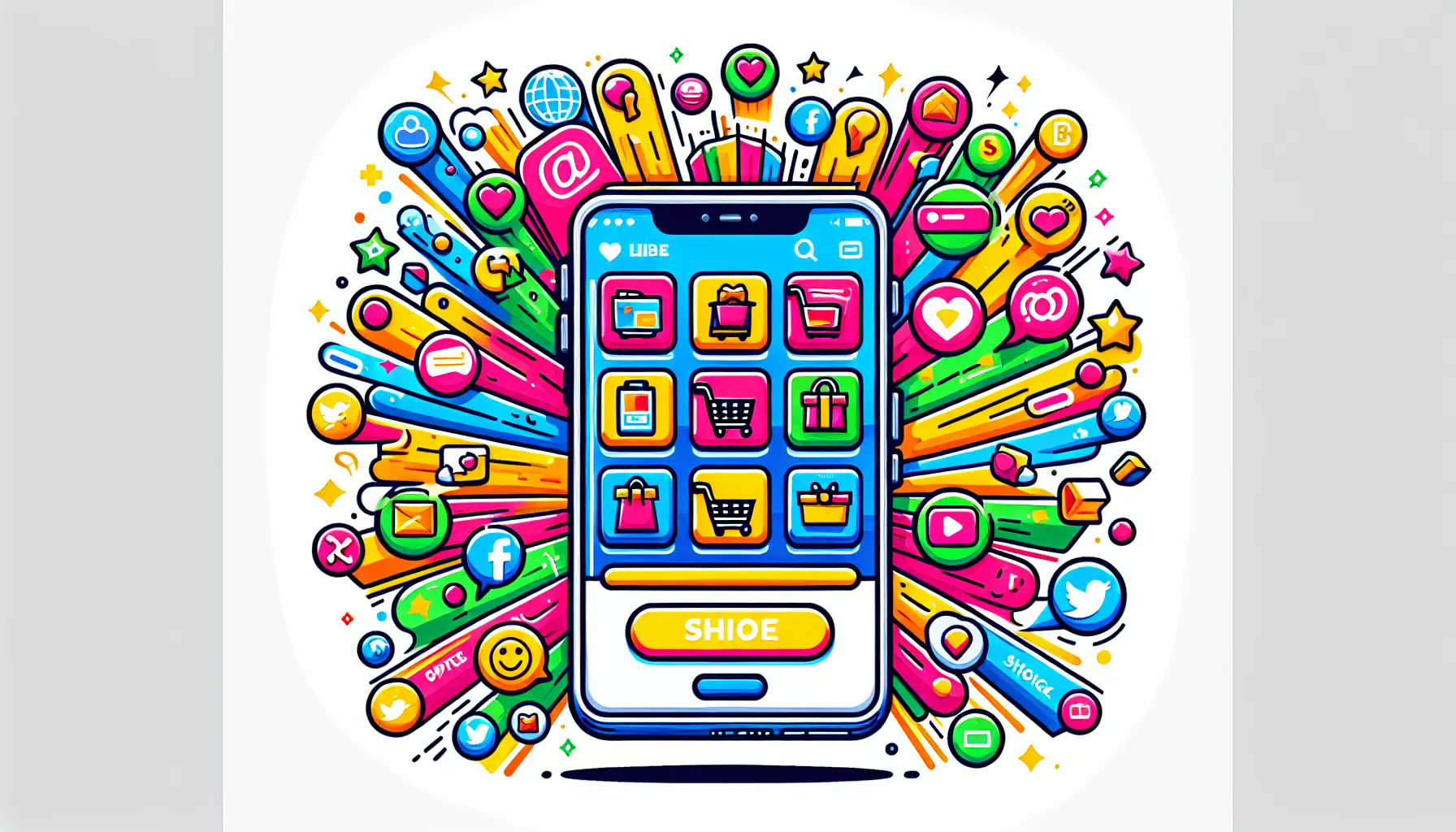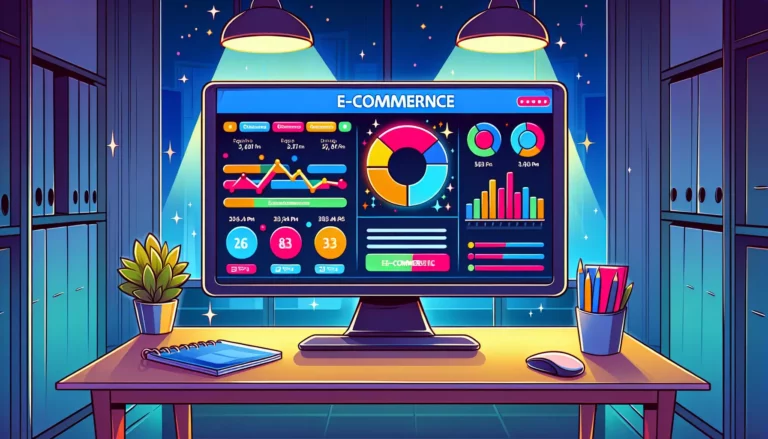
- Developing a successful e-commerce strategy
- Target group analysis and market research
- User-friendliness and design optimization
- Effective marketing for online shops
- Logistics and customer service in e-commerce
- Measuring success and continuous improvement
In order to be successful in e-commerce projects, it is important to develop a clear strategy that covers all aspects of your online business. First, you should consider what goals you want to pursue with your online shop. Are you looking to increase your brand awareness, maximize sales, or reach new target groups? The answers to these questions form the foundation of your strategy.
Another important point is market research. You need to know who your target audience is and what their needs are. Various tools and methods can be helpful here, such as surveys, interviews, or competitor analysis. Data from social media or Google Analytics also provide valuable insights into the behavior of your potential customers.
The selection of the right e-commerce platform also plays a crucial role. There are many different systems that vary in functionality, user-friendliness, and pricing. Consider what features are important for your online shop operators, such as effective inventory management, easy payment methods, or numerous integrations with other tools.
Additionally, the design of your shop should not be neglected. An appealing, user-friendly layout can lead to more visitors staying on your page and ultimately making a purchase. Make sure that the navigation is intuitive and that product information is presented clearly and attractively.
From a technical perspective, it is also important to focus on proper SEO optimization so that your shop becomes visible in search results. This increases the likelihood that new customers will discover your shop and shop there. A well-thought-out content strategy can help you create relevant content that appeals to potential buyers and draws attention to your products.
Overall, a well-thought-out strategy not only helps to make e-commerce projects successful from the start but also ensures that you can react flexibly to changes in the market. Planning and implementing should go hand in hand, and you should regularly check whether your set goals are still realistic or if adjustments are necessary.
Target group analysis and market research
To find out who your target audience really is, there are a few cool methods that can help you get a clearer picture of potential buyers. One simple way is to conduct surveys on your website or through social media. Just ask what people are interested in, what they need, and why they might buy from you. Also, browsing through competitors and their customer feedback can give you valuable insights that you can use for your own market research.
Another important aspect is the analysis of data. Tools like Google Analytics show you who visits your site, which pages are popular, and where the users come from. Such information is worth its weight in gold, as it helps you understand how you can adjust your offering and marketing to better address the needs of your visitors.
Don’t forget the social component! Platforms like Facebook, Instagram, or Twitter offer a lot of insights. Look at how your target audience interacts there, which topics and products they find exciting. Often, there are special groups or forums where like-minded individuals gather, and where you can get direct feedback or ideas for your thoughts.
Once you have a comprehensive data set, you should analyze it and develop a persona based on it. This fictional character represents your ideal target audience and helps you plan focused marketing strategies. Consider what this persona likes, what problems they have, and how your product can provide a solution. This makes it much easier to create relevant content and carry out the right marketing actions.
Of course, it’s also important to regularly check if you are still on the right track. E-commerce is dynamic, and changes in market research or in your customers’ behavior can happen quickly. So keep your ear to the ground and be ready to adjust your business accordingly. Only then can you be successful in the long run and optimally plan and implement your e-commerce projects.
User-friendliness and design optimization
The usability is a key factor for the success of your e-commerce project. If users have difficulty navigating your site, they will quickly become frustrated and leave the shop without making a purchase. So, how can you ensure that your online shop is intuitive and easy to use? A good start is a clearly structured layout. Make sure that important information is easy to find, and that the navigation is logically organized. Users should be able to reach the desired products in just a few clicks.
Equally important is the design of the product pages. Start with high-quality images that showcase the products attractively. Use clear, engaging descriptions that contain all the necessary information. This not only helps buyers make an informed decision but can also strengthen trust in your online shop. Don’t forget about mobile optimization! More and more people are using their smartphones to shop online. If your shop looks or functions poorly on mobile devices, you will lose many customers.
Another point that is often overlooked is the search function. Ensure that users can quickly search for products. An effective search bar with autocomplete and filtering options can make all the difference. This way, customers can find exactly what they are looking for without having to scroll or search for a long time.
Additionally, the performance of your site should not be underestimated. Loading times are crucial. No one wants to wait long for a page to load. Make sure your images are optimized and that your hosting provider offers the necessary resources to guarantee fast loading times. A slow page can cause potential buyers to drop off before they even notice your shop.
To continuously improve your usability, you should regularly gather feedback from your customers. Surveys or simple rating functions can help you identify weaknesses and make appropriate adjustments. This is an important step in increasing your users’ satisfaction in the long term and successfully managing your e-commerce projects.
Finally, it’s important that you do not view the design process in isolation. Remember that usability is closely related to your overall marketing and target audience engagement. Your shop should reflect the values and identity of your brand so that customers feel at home as soon as they visit your site. A consistent visual language and authentic content can significantly enhance the shopping experience and strengthen brand loyalty. Planning and implementation should go hand in hand here to ensure that your e-commerce success is not just a one-time event but a long-term perspective.
Effective marketing for online shops

A good marketing strategy for your online shop is essential to be visible in the e-commerce world and to attract customers. Initial steps include clear positioning and defining your target audience. Think about how to best present your products to find the right approach. Content that emphasizes the added value of your products is crucial.
To gain more attention, you should make intensive use of social media. Platforms like Facebook, Instagram, or TikTok are invaluable for driving your marketing forward. Create striking content that is not only informative but also entertaining. Use visual elements to capture the attention of your target audience. Videos, stories, and short posts are ideal for generating high interaction with your followers.
You can achieve a lot with search engine optimization as well. Make sure the most important keywords related to your products are strategically placed on your website. The content should be not only informative but also engaging – think of blog articles, guides, or FAQs that answer common questions from your customers.
Another great point is email marketing. Build a list of subscribers and keep them regularly updated on news and offers. Here, you can create personalized content tailored to the purchasing behavior and interests of the users. This increases the likelihood that they will make a purchase in your shop.
Also consider whether you want to offer discounts or special promotions to encourage sales. Whether it’s seasonal offers or promotions for loyal customers – any discount can be an incentive to shop in your store. Additionally, add a referral bonus for existing customers to promote viral marketing.
In summary, effective marketing is about combining the right approach and outreach to increase the visibility of your e-commerce projects. Keep your marketing fresh and engaging to continuously attract new customers and retain existing ones. Planning and implementing your marketing strategies is the key to success – so be creative and bold!
Logistics and customer service in e-commerce
A solid customer service and efficient logistics are crucial for the success of your e-commerce projects. When buyers order a product, they expect not only fast delivery but also a smooth process throughout the shopping experience. The shipping options should be clearly communicated and as diverse as possible so that customers can choose the method that works best for them. Consider whether you want to offer free returns – this often increases the trust and satisfaction of your buyers.
A quick delivery is a decisive purchasing criterion nowadays. People are accustomed to receiving their orders promptly, so you should ensure that the processes behind the scenes are optimized. This means finding reliable logistics partners and being well-organized internally to process orders quickly and efficiently. Also, make sure you keep an eye on your inventory – out-of-stock situations are unpleasant for any customer and often lead to lost sales.
Furthermore, communication with your customers is essential. Keep them informed about the status of their orders at all times. Automated email notifications about shipping or delays can help avoid uncertainties. If a problem arises, you should respond quickly and without bureaucracy. The better the customer service, the higher the likelihood that buyers will shop again in your online shop.
Also, consider the possibility of live chats or social media support. Many customers today prefer direct communication and expect quick answers to their questions. These interactions can not only help to resolve issues quickly but also establish a personal connection with customers that strengthens their trust in your brand.
To continuously improve your logistics and customer service, you should regularly gather feedback. Ask your customers about their experiences and take constructive criticism seriously. This can provide you with valuable insights and help you optimize your offerings. The combination of excellent customer service and streamlined logistics will ensure that you not only acquire new customers but also promote repeat purchases. This is a crucial step to being successful in the long term and planning and implementing your e-commerce projects optimally.
Measuring success and continuous improvement
The success measurement is a cornerstone when it comes to your e-commerce projects. Only if you know which factors are successful and which are not, can you take the right actions to adjust your strategy. One of the most effective methods is to use analytics tools. Platforms like Google Analytics provide you with deeper insights into user behavior on your website. You can see where your visitors come from, which pages they visit, and where they drop off. This information is crucial for making targeted adjustments.
Set clear KPIs (Key Performance Indicators) to measure the success of your actions. This includes metrics such as the conversion rate, average order size, or the bounce rate of your page. If you regularly check these values, you’ll quickly see whether your marketing strategies and website optimizations have the desired effect or if it’s time to change something. It’s important not only to look at what works but also to analyze what doesn’t work and why.
Another important aspect is customer feedback. Use surveys or feedback tools to find out what your customers think about their shopping experience. Questions like “What did you like best?” or “Where could we improve?” give you valuable insights into your strengths and weaknesses. Be sure to analyze the responses and take appropriate actions. The voice of the customer is often the key to success.
Remember that continuous improvement is a process and not a one-time event. Create a plan for how often you will analyze the data and what actions you will implement if necessary. Be flexible and ready to adjust your strategy based on the information you gather. When a goal is achieved, set the next one to continuously work towards making your e-commerce projects even more successful. Keep your focus on optimizing the user experience to enhance customer retention.
Also, pay attention to how important it is to plan and implement a well-thought-out strategy for the growth of your business. E-commerce is dynamic and constantly changing, so it is important to stay up to date and recognize trends early. Proactive management not only helps you tackle current challenges but also prepares you for future developments. This ensures that your online shop remains successful not only today but also in the future.




